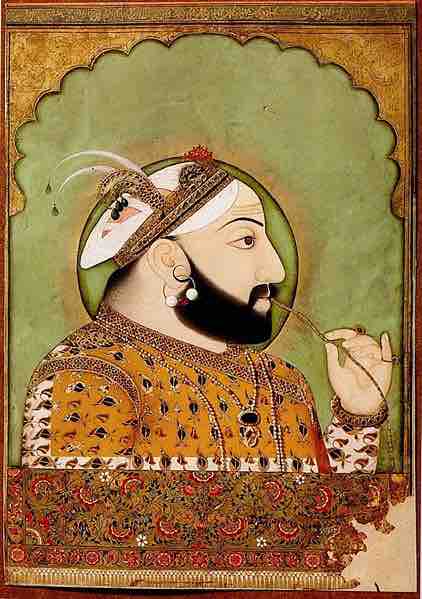Overview: The Hindu Rajput Kingdoms
The Rajputs are members of patrilineal clans in western, central, and northern India who rose to prominence between the 6th and 12th centuries. From the beginning of the 9th century, these Rajput dynasties dominated many parts of northern India, and they established the overwhelming majority of Hindu princely states in Rajasthan and Surashtra in northwestern India, which they ruled until the 20th century. Some important dynasties include the Chauhan Dynasty of Ajmer and Delhi (956–1192); the Solanki Dynasty of present day Gujarat (945–1297); and the Chandela Dynasty of the Bundelkhand Region of central India (10th to 13th centuries). During the period of Islamic invasions (11th through 16th centuries), the Rajput kingdoms proved to be the primary obstacle to the complete Muslim conquest of Hindu India.
Rajput and Mughal Relations
Under the Mughal emperor Akbar's reign (1556–1605 CE), the Rajputs accepted Mughal authority in exchange for religious accommodation and were admitted into the emperor's court. Many Rajputs assumed positions in Akbar's government and army or formed marital alliances with him. Mughal-Rajput relations suffered, however, under the reign of the Mughal emperor Aurangzeb (1658–1707), who did not pursue the policy of religious accommodation of his predecessors.
Through their many centuries of rule in northern India, the Rajputs built spectacular temples, forts, and palaces and were eager patrons of painting. Rajput and Mughal art and architecture were also important influences on one another once the two powers came into contact.
Rajput Painting
Rajput painting is the style of Indian miniature painting associated with the royal courts of the Rajputs between the 16th and the 19th centuries. It flowed primarily from the indigenous Western Indian style of manuscript illustration that had flourished in the 14th and 15th centuries, but it was also greatly influenced by Mughal painting. Rajput painting usually took the form of miniatures in manuscripts or on single sheets kept in albums, although examples of this style can also be found on the walls of Rajput palaces, forts, or havelis (mansions). Early Rajput painting was almost exclusively devoted to the life and deeds of Krishna, the Hindu cowherd god. Other popular themes included scenes from Hindu epics, the Ramayana and the Mahabharata; pictorial representations of the ragamala (musical modes); women, lovers, and romance; portraits; and court and hunting scenes.

Krishna and Radha in a Pavilion
An 18th century Rajput painting by the artist Nihâl Chand, chief painter at the court of Kishangarh. Krishna and his companions are by far the most popular theme of Rajput painting.
The colors used in Rajput painting were extracted from minerals, plant sources, conch shells, beetle wings, and sometimes even precious stones. Gold and silver were also used. The preparation of these colors was a lengthy process that could take weeks to accomplish. The brushes used were very fine, in keeping with the requirements of fine miniature painting.
Styles of Painting
Rajput painting can be divided into two styles: the Rajasthani style, associated with the Rajput courts in Rajasthan, and the Pahari style, associated with the Rajput courts of the Himalayan foothills.
The Rajasthani Style
Emerging in the last decades of the 16th century, Rajasthani art is usually divided into four major schools, each centered on different courts and based on differences in artistic style. These four schools are the Mewar school, the Marwar school, the Hadoti school, and the Dhundar school.
- The Mewar school is associated with the courts of Chavand, Nathwara, Devgarh, Udaipur, and Sawar and is characterized by simplicity and vivid colors. It produced a large number of devotional paintings for the pilgrim trade.

Maharana Sangram Singh II of Mewar
Udaipur, Mewar, 1725–35. Opaque watercolor on paper, set with pearls and precious stones. This is a good example of portraiture in the Rajput style and of the Mewar School's work.
- The Marwar school is associated with the courts of Kishangarh, Bikaner, Jodhpur, Nagaur, Pali, and Ghanerao courts. It is best known for its fine miniature portraits from the second half of the 17th century and a large body of highly stylized and colorful painting from the 19th century.
- The Hadoti school is associated with the courts of Kota, Bundi, and Jhalawar and is remarkable for its vivid portrayal of movement, strength, and vitality, best seen in depictions of hunting and sports scenes.
- The Dhundar school is associated with the courts of Amber, Jaipur, Shekhawati, and Uniara and is characterized by formal yet rich portraits, very large paintings of the deeds of Krishna, and Western influences in the 19th century.
The Pahari Style
The Pahari style of miniature painting and book illustration developed in the independent states of the Himalayan foothills between the 17th and 18th centuries and began to decline after 1800. This style consists of two schools: the Basohli school and the Kangra school.
- The Basohli school flourished toward the end of the 17th century; it is best known for its bold use of color, intense emotionality, stylized facial types shown in profile with prominent eyes, and distinctive depictions of jewelry.
- The Kangra school emerged in the mid-18th century as the Basohli style began to fade and is characterized by curving lines, calmer colors, and delicate lyricism.

Utka Nayika: A Lady Awaits Her Lover in the Forest
An example of Pahari painting from the Kangra school dated between 1775–1780. The subject matter—lovers and romance—is a popular theme in Rajput painting.